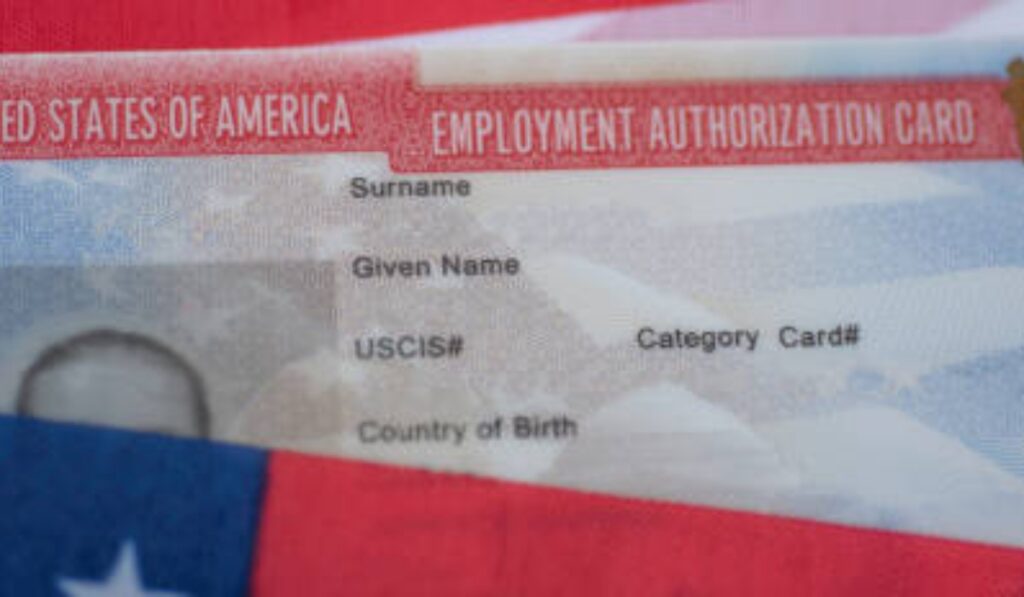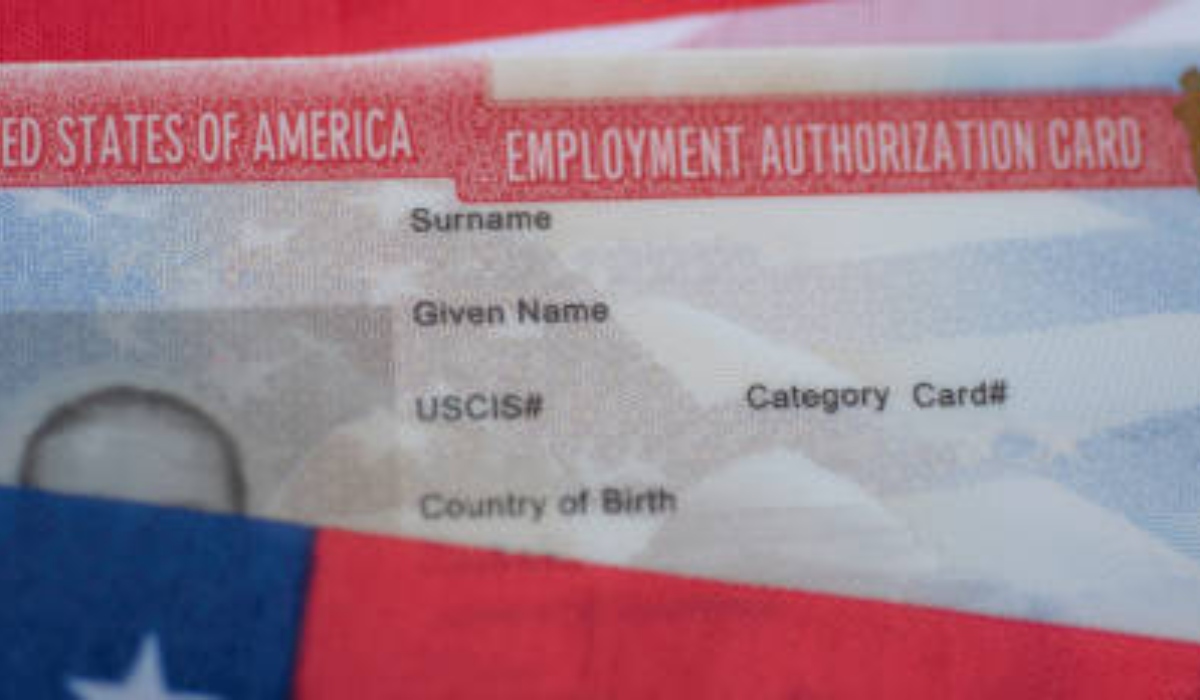
Navigating the US Work Permit: A Comprehensive Guide to Obtaining a Work Permit in the United States
Securing a work permit in the United States is a crucial step for foreign nationals seeking employment opportunities. This document, officially known as an Employment Authorization Document (EAD), grants permission to work legally within the US. Understanding the eligibility requirements, application process, and potential challenges is paramount for a successful application. This comprehensive guide provides a detailed overview of the US work permit system, offering insights and practical advice for navigating the complexities involved.
Understanding the US Work Permit (EAD)
A work permit in the United States, or EAD, is a document issued by the United States Citizenship and Immigration Services (USCIS). It allows foreign nationals who are not US citizens or lawful permanent residents (green card holders) to work legally in the US. The EAD serves as proof of employment authorization and is essential for anyone seeking to work in the US without permanent residency.
Who Needs a Work Permit?
Several categories of individuals may require a work permit in the United States. These include:
- Students on F-1 visas seeking Optional Practical Training (OPT) or Curricular Practical Training (CPT).
- Spouses of certain visa holders, such as E, H, or L visa holders.
- Individuals with pending applications for adjustment of status (green card applicants).
- Asylees and refugees.
- Individuals granted Temporary Protected Status (TPS).
- Certain nonimmigrant visa holders who are authorized to work incident to their status but require an EAD as proof.
Eligibility Requirements for a US Work Permit
The eligibility requirements for a work permit in the United States vary depending on the applicant’s immigration status and the specific category under which they are applying. Some common categories and their associated requirements include:
F-1 Students (OPT and CPT)
F-1 students are eligible for CPT and OPT, which allows them to gain practical experience related to their field of study. CPT is typically for employment that is an integral part of the student’s curriculum, while OPT is available before or after graduation. To be eligible for OPT, students must be in valid F-1 status and have been enrolled full-time for at least one academic year. [See also: F-1 Visa OPT Extension]
Spouses of Visa Holders
Spouses of certain visa holders, such as E, H, and L visa holders, may be eligible for a work permit in the United States. The specific requirements vary depending on the visa type. For example, spouses of L-1 visa holders are generally eligible for an EAD, while spouses of H-1B visa holders may be eligible under certain conditions, such as having an approved I-140 immigrant petition.
Adjustment of Status Applicants
Individuals who have filed an application for adjustment of status (Form I-485) to become a lawful permanent resident may be eligible for a work permit in the United States while their application is pending. This allows them to work legally while waiting for their green card to be approved. Applicants must demonstrate that they have a pending I-485 application and are otherwise eligible for an EAD.
Asylees and Refugees
Individuals who have been granted asylum or refugee status are automatically authorized to work in the US. They can apply for an EAD as proof of their employment authorization. Asylees and refugees are generally eligible for a work permit in the United States immediately upon receiving their status.
Individuals with Temporary Protected Status (TPS)
Individuals who have been granted TPS due to conditions in their home country may be eligible for a work permit in the United States. TPS provides temporary protection from deportation and allows eligible individuals to live and work in the US for a specified period. To maintain eligibility, individuals must re-register for TPS during each designated registration period.
The Application Process for a US Work Permit
The application process for a work permit in the United States typically involves the following steps:
- Determine Eligibility: Identify the specific category under which you are eligible to apply for a work permit in the United States.
- Gather Required Documents: Collect all necessary documents, such as your passport, visa, I-94 arrival/departure record, and any other documents required for your specific category.
- Complete Form I-765: Fill out Form I-765, Application for Employment Authorization, accurately and completely. This form is available on the USCIS website.
- Pay the Filing Fee: Pay the required filing fee, which can be found on the USCIS website. Some applicants may be eligible for a fee waiver based on financial hardship.
- Submit Your Application: Mail your completed Form I-765, supporting documents, and filing fee to the appropriate USCIS service center. Check the USCIS website for the correct mailing address based on your eligibility category.
- Attend Biometrics Appointment (if required): USCIS may require you to attend a biometrics appointment to provide fingerprints and a photograph.
- Wait for Approval: Wait for USCIS to process your application. Processing times vary depending on the service center and the specific category.
- Receive Your EAD: If your application is approved, you will receive your EAD card in the mail.
Common Challenges and How to Overcome Them
Applying for a work permit in the United States can be challenging, and applicants may encounter various obstacles. Here are some common challenges and tips on how to overcome them:
Application Delays
USCIS processing times can be lengthy, and applications may be delayed due to various factors, such as backlogs and increased scrutiny. To mitigate delays, ensure that your application is complete and accurate, and respond promptly to any requests for additional information from USCIS. You can also check the USCIS website for current processing times and consider contacting USCIS directly to inquire about the status of your application.
Denied Applications
Applications for a work permit in the United States may be denied for various reasons, such as failing to meet eligibility requirements, providing insufficient evidence, or having a criminal record. If your application is denied, carefully review the denial notice to understand the reasons for the denial. You may be able to file an appeal or motion to reopen the case if you believe the denial was in error. Alternatively, you may be able to reapply with additional evidence or under a different eligibility category.
Maintaining Valid Status
It is crucial to maintain valid immigration status while your work permit in the United States application is pending. Failing to maintain valid status can jeopardize your eligibility for an EAD and may lead to deportation. Ensure that you comply with all visa requirements and report any changes in your circumstances to USCIS promptly. [See also: Maintaining Legal Status in the US]
Tips for a Successful Application
To increase your chances of a successful US work permit application, consider the following tips:
- Start Early: Begin the application process well in advance of your anticipated start date to allow ample time for processing.
- Read Instructions Carefully: Review the instructions for Form I-765 and any other relevant forms thoroughly to ensure that you understand the requirements and provide all necessary information.
- Provide Complete and Accurate Information: Ensure that all information provided on your application is accurate and consistent with your supporting documents.
- Gather Sufficient Evidence: Provide sufficient evidence to support your eligibility for a work permit in the United States, such as copies of your passport, visa, I-94, and any other relevant documents.
- Seek Legal Assistance: If you have any questions or concerns about the application process, consider seeking assistance from an experienced immigration attorney.
The Future of US Work Permits
The landscape of work permit in the United States is constantly evolving, with changes in immigration laws and policies impacting eligibility requirements and processing times. Staying informed about these changes is essential for anyone seeking to obtain or maintain a work permit in the United States. Monitoring updates from USCIS and consulting with immigration professionals can help you navigate the complexities of the system and ensure compliance with current regulations.
Conclusion
Obtaining a work permit in the United States is a significant step for foreign nationals seeking employment opportunities. By understanding the eligibility requirements, application process, and potential challenges, applicants can increase their chances of a successful outcome. With careful preparation and attention to detail, you can navigate the complexities of the US work permit system and achieve your professional goals in the United States.

